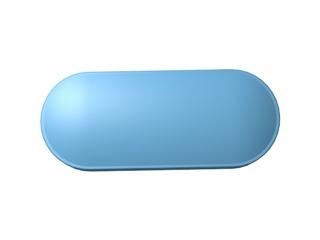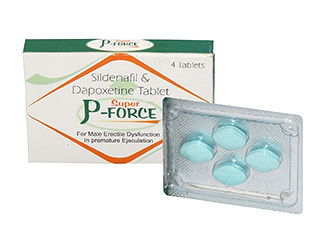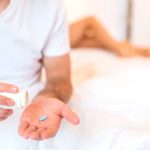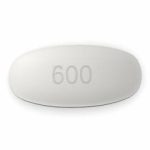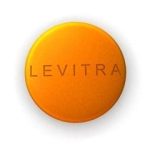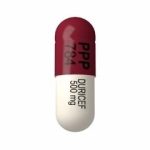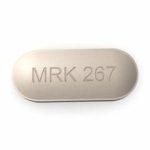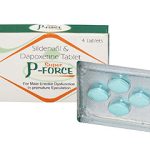Sildenafil Citrate | Sildenafil 50 mg price
Sildenafil is a selective inhibitor of cGMP phosphodiesterase type 5 (PDE5). The implementation of the physiological mechanism of erection is associated with the release of nitric oxide (NO) in the cavernous body during sexual stimulation. This, in turn, leads to an increase in the level of cGMP, further relaxation of the smooth muscle tissue of the corpora cavernosa, and increased blood flow.
Sildenafil does not have a direct relaxant effect on the cavernous bodies of the penis but enhances the action of nitric oxide (NO) by inhibiting PDE5. A prerequisite for the effectiveness of sildenafil is sexual stimulation.
Sildenafil 50mg price
50 mg x 10 pills $25.99 $2.60 per pill Add to cart
50 mg x 30 pills $45.99 $1.53 per pill Add to cart
50 mg x 60 pills $83.99 $1.40 per pill Add to cart
50 mg x 90 pills $115.99 $1.29 per pill Add to cart
Sildenafil is selective for PDE5 in vitro, its activity against PDE5 exceeds the activity against other known phosphodiesterase isoenzymes: PDE6 – 10 times; PDE1 – more than 80 times; PDE2, PDE4, PDE7-PDE11 – more than 700 times. Sildenafil is 4000 times more selective for PDE5 than for PDE3, which is of paramount importance since PDE3 is one of the key enzymes in the regulation of myocardial contractility.
Sildenafil is rapidly absorbed after oral administration. After a single dose of sildenafil at a dose of 100 mg, Cmax when taking sildenafil on an empty stomach is reached on average after 60 minutes (from 30 minutes to 120 minutes). When taken in combination with fatty foods, the absorption rate decreases by an average of 29%, and the Tmax increases by 60 minutes. Sildenafil is metabolized primarily in the liver by cytochrome CYP3A4 isoenzyme (major pathway) and cytochrome CYP2C9 isoenzyme (minor pathway). The major active circulating metabolite resulting from the N-demethylation of sildenafil undergoes further metabolism. The selectivity of this metabolite for PDE is comparable to that of sildenafil and its activity for PDE5 in vitro is approximately 50% of that of sildenafil. The concentration of the metabolite in the blood plasma of healthy volunteers was approximately 40% of the concentration of sildenafil. The N-dimethyl metabolite undergoes further metabolism; T1/2 is about 4 hours.
In healthy elderly patients (over 65 years old), the clearance of sildenafil is reduced, and the concentration of free sildenafil in blood plasma is about 40% higher than in young people (18-45 years old). Age has no clinically significant effect on the frequency of side effects.
Sildenafil: dosages
The recommended dose for most patients is 50 mg approximately 1 hour before sexual activity. Depending on efficacy and tolerance, the dose can be increased to Viagra 100 mg or reduced to 25 mg. The maximum recommended dose is 100 mg. The maximum recommended application frequency is 1 time/day.
In mild to moderate renal impairment, no dosage adjustment is necessary; in severe renal failure, the dose of sildenafil should be reduced to 25 mg.
Since the excretion of sildenafil is impaired in patients with liver damage (in particular, with cirrhosis), the dose of sildenafil should be reduced to 25 mg.
It is not necessary to adjust the dose of sildenafil in elderly patients.
Viagra is a drug that has a positive effect on blood circulation in the pelvic region due to vasodilation. It is effectively used to restore erectile function in men, as well as to normalize blood flow in the penis.
Sildenafil maintains the elasticity of the penis, sufficient for full sexual intercourse, and also slightly prolongs it. Sildenafil does not act alone, but only in the presence of excitatory irritation.
Its use also leads to a decrease in pressure in the lungs, and a decrease in shortness of breath. It is used for existing erectile dysfunctions, and complete impotence, to eliminate pathological conditions of the pulmonary artery.
Indications:
- psychogenic erectile dysfunction;
- mixed erectile dysfunction;
- organic erectile dysfunction.
Contraindications:
- The presence of Peyronie’s disease;
- Hypersensitivity to Sildenafil;
- The presence of cavernous fibrosis of the penis;
- increased tendency to bleed;
- functional failure of the liver;
- The presence of cirrhosis of the liver;
- Various diseases that cause priapism;
- Individual intolerance to sildenafil or its components;
- Ulcerative lesions of the stomach or duodenum in the acute phase;
- The presence of various anatomical pathologies of the penis;
- Arrhythmias, decrease in the general level of blood pressure;
- Simultaneous use of Sildenafil with drugs from the group of nitrates.
Combined use with other drugs
In combination with ritonavir, the maximum single dose of sildenafil should not exceed 25 mg, and the frequency of use should not exceed 1 time in 48 hours.
When combined with inhibitors of the cytochrome CYP3A4 isoenzyme (erythromycin, saquinavir, ketoconazole, itraconazole), the initial dose of sildenafil should be 25 mg.
In order to minimize the risk of orthostatic hypotension in patients taking alpha-blockers, the sildenafil should only be initiated after hemodynamic stabilization has been achieved in these patients. Consideration should also be given to reducing the starting dose of sildenafil.
Hemodynamic effect of Sildenafil
In a study of the hemodynamic effect of sildenafil at a single dose of 100 mg in patients with severe coronary artery disease (more than 70% of patients had stenosis of at least one coronary artery), the systolic and diastolic pressures at rest decreased by 7% and 6%, respectively, and pulmonary systolic pressure decreased by 9%. Sildenafil did not affect cardiac output or alter blood flow in stenotic coronary arteries.
In another study, patients with erectile dysfunction and angina who were taking anti-angina medications (excluding nitrates) exercised until their angina symptoms resolved. disappear. breast improvement. Exercise duration was significantly longer (19.9 seconds; 0.9-38.9 seconds) in patients treated with sildenafil 100mg once compared to patients treated with placebo.
The effect of changing the dose of sildenafil (up to 100mg) has also been studied in men with erectile dysfunction and high blood pressure taking more than two antihypertensive drugs. Sildenafil improved erections in 71% of men compared to 18% in the placebo group. The frequency of side effects was comparable to that seen in other groups of patients, as well as in people taking more than three antihypertensive drugs.
Sildenafil Citrate – Study
In some patients, 1 hour after taking sildenafil at a dose of 100 mg, slight and transient impairment of the ability to distinguish color shades (blue/green) was detected. 2 hours after taking the drug, these changes were absent. It is believed that the violation of color vision is associated with the inhibition of PDE6, which is involved in the process of light transmission in the retina. Sildenafil did not affect visual acuity, contrast perception, intraocular pressure, or pupil diameter.
In a placebo-controlled crossover study in patients with established early age-related macular degeneration (n=9), sildenafil at a single 100 mg dose was well tolerated. Clinically significant visual changes assessed using special visual tests (visual acuity, Amsler’s network, color perception, color change imitation, Humphrey’s perimeter, and photo stress) have not been identified.




